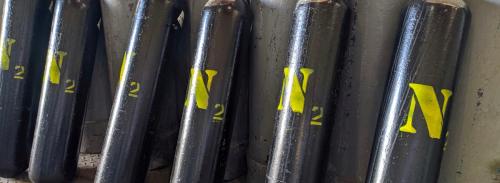23 February 2023 :
(21/02/2023) - Alabama’s Latest Steps to Use Nitrogen Hypoxia Recapitulate the Failed Promise of Humane Execution
On February 15, John Hamm, Commissioner of Alabama’s Department of Corrections, told the Associated Press that the state was “close” to completing the protocol needed to carry out executions by nitrogen hypoxia. Since the state added this method to its menu of execution options almost 5 years ago, in March 2018, it has run into problems completing the steps necessary to actually use it.
Those problems seemed to have been resolved last September when Deputy Attorney General James Houts told a federal judge that there was a “very good chance” that nitrogen hypoxia would be ready for use in the scheduled execution of Alan Miller. Houts said that the nitrogen hypoxia protocol, which would be “nested” within the state’s existing execution procedure manual, “is there” though not yet final.
But 3 days later, Hamm contradicted him in an affidavit. He said that the ADOC was not ready to “carry out an execution by nitrogen hypoxia.”
Whether or not the latest claim that it is “close” to being ready is credible, the idea of using nitrogen to put condemned inmates to death is just the latest example of this nation’s illusory quest for a humane execution method.
According to The Atlantic’s Elizabeth Bruenig, execution by “Nitrogen hypoxia is the dream of Stuart Creque, a technology consultant and filmmaker who, in 1995, proposed the method in an article for National Review, in which he speculated optimistically about the ease and comfort of gas-induced death.”
Since then other proponents also have touted its simplicity.
An article in Oklahoma Watch (Oklahoma also authorizes execution by nitrogen hypoxia) described the nitrogen hypoxia process as follows: “The condemned man enters the room where he will draw his last breath. He will be restrained in some way, perhaps strapped to the T-shaped platform where other offenders have been executed by injection. He may have taken a sedative or will be given one in the room. But he likely won’t be too groggy.”
In an execution by nitrogen hypoxia, “The prisoner may then have a mask or a plastic hood or bag strapped to his face. Colorless, odorless nitrogen gas will stream into the mask from a tank similar to those used to inflate helium balloons. The gas could come from any one of thousands of distributors or manufacturers nationwide.”
Advocates note that “Nitrogen itself does not cause death; the hypoxia, or lack of oxygen, does.” Death they say would occur “from breathing only nitrogen, without the life-sustaining oxygen that makes up about 20 % of the air.” Inhalation of “only 1 or 2 breaths of pure nitrogen will cause sudden loss of consciousness and, if no oxygen is provided, death.”
In 2015, when Oklahoma became the 1st state to adopt nitrogen hypoxia, Gov. Mary Fallin claimed that it would deliver death “effectively and without cruelty.” When she signed the new law, Fallin said, “The bill I signed today gives the state of Oklahoma another death penalty option that meets that standard” and ensures that execution “is painless and humane.”
As has been the case in many areas of policy making in a federal system, Alabama simply copied the Oklahoma plan.
Alabama State Sen. Trip Pittman who sponsored Alabama’s nitrogen hypoxia legislation acknowledged that he got the idea from Oklahoma. Pittman also parroted Gov. Fallin’s promise that this execution method would be “less painful” and a “more humane method” of implementing a death sentence.
For citizens and death penalty scholars as well, the Fallin/Pittman comments about nitrogen hypoxia have a familiar ring to them.
Over the last century and more, the sales pitch for new ways of putting people to death has taken a recognizable form. Every time someone has pushed for the use of a new execution technology, they have talked about its capacity to reduce the pain and suffering of the condemned and also called it humane.
For example, at the end of the 19th century when New York replaced hanging with the electric chair, scientists argued that “The velocity of the electric current is so great that the brain is paralyzed; is indeed dead before the nerves can communicate a sense of shock.” The so called Gerry Commission, which recommended the electric chair to the governor and state legislature, concluded that death by electrocution would be “instantaneous upon its application.”
We heard something similar again in 1921 when 2 Nevada legislators introduced legislation to make the gas chamber that state’s execution method. They called it the “Humane Execution Bill.”
Around the same time, Dr. J. Chris Lange wrote in the Pennsylvania Medical Journal that death in the gas chamber “will happen quickly after the gas ascends to a level with the mouth and nose of the prisoner….” Lange said that such a death “without preliminaries” would “leave the criminal little more to dread of the future than the common lot of all mankind.”
Finally, in 1977, when Oklahoma took the lead in adopting lethal injection, its supporters put it simply: lethal injection would be accomplished with “no struggle, no stench, no pain.”
In spite of these good intentions and noble promises, history has turned out to be a harsh teacher.
None of those execution methods has lived up to the hype.
Some inmates who have been electrocuted caught on fire. Many of those who died in the gas chamber did so neither quickly nor painlessly. Instead, they suffered grisly, prolonged, agonizing deaths as they slowly suffocated.
Lethal injection has turned out to be the most unreliable of all, a lesson driven home in 2022 when 35% of execution attempts using that method were botched.
As to Alabama’s quest to use nitrogen hypoxia, there are plenty of reasons to worry that it will have similar problems.
We know that there have been serious concerns when it has been used to euthanize animals. The 2013 American Veterinary Medical Association Guidelines for the Euthanasia of Animals concluded that nitrogen hypoxia should not be used with an anesthesia but recognizes that doing so can delay death.
And The Guardian quotes Joel Zivot, an anesthesiology and surgery professor at Emory College, as saying, “Nitrogen gas will not work … because even though the gas is inert, breathing it is going to be much more complicated and getting people to cooperate to breathe will be complicated. Because it’s odorless and colorless,” Zivot continues, “it’s dangerous to handle so everyone that’s in the vicinity of the person who they’re gassing could theoretically be at risk themselves.”
As Alabama gears up to implement the latest novelty among execution methods, it should remember history’s lesson: there can be no such thing as a foolproof or humane execution. If it does not, the state which has already had more than its share of execution horrors will, as the philosopher George Santayan puts it, be “condemned to repeat” them.







